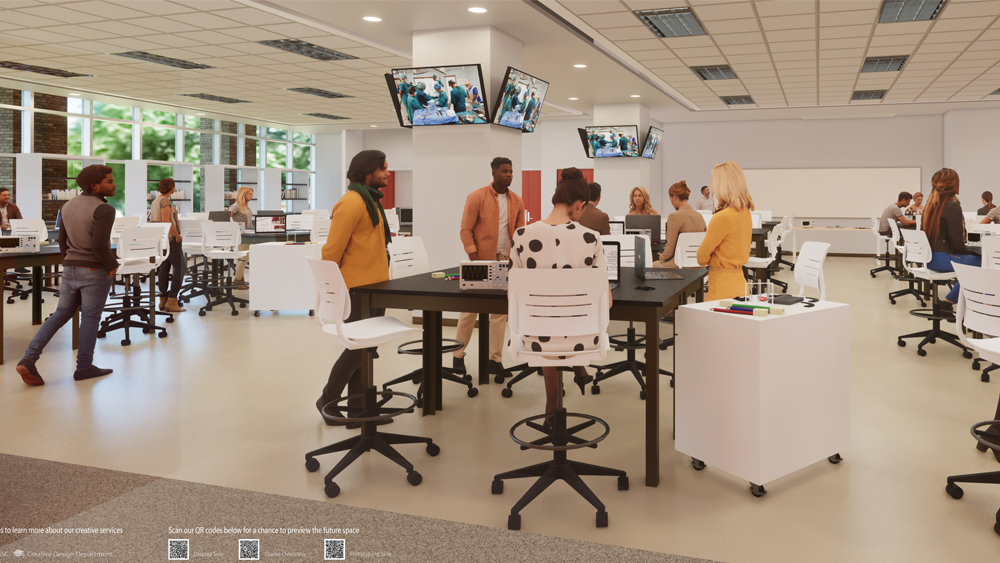
Students in Texas A&M University’s Department of Biomedical Engineering are learning to create innovative solutions for some of the most pressing medical issues facing individuals around the globe. They are also working with companies and clinicians nationwide to address these needs.
A space tailored to the specific needs for teaching biomedical engineering has been created thanks to recent room renovations. Now, the department and the Texas A&M Foundation need funding to outfit a state-of-the-art Biomedical Engineering (BME) Design Studio. This space will allow our students to immerse themselves in the design process and have tools and equipment that are not readily available other places on campus.
The BME Design Studio, located in the Emerging Technologies Building, will foster an entrepreneurial mindset based on teamwork and design. Having hands-on experience with all aspects of the medical device life cycle is essential and will be incorporated within the studio. Students will have space and resources to work on device prototypes and team projects throughout their entire undergraduate experience. It will be used to teach all required design courses and will allow for teams to work on projects outside of scheduled class times.
Once furnished, the space will have 20 workstations for student teams, as well as tools and equipment not easily used in a traditional lecture-style classroom. Each workstation will accommodate five students and will include a lab-grade table, stools, and storage for device prototypes and handheld tools commonly used for device prototyping.
Students will have access to a variety of specific medical resources such as anatomical models, virtual reality tools, electronics and chemical and biological test equipment. The space will also include specialized hand tools, 3D printers, laser machining tools and other prototyping equipment. Critical infrastructure such as large-screen televisions, HD cameras and high-fidelity audio for effective communication will further allow students to virtually meet with clients, researchers and medical professionals.
How you can help
The approximate cost of each station and the corresponding tool setup is $4,000. Since the space is used by all undergraduates each year of their degree, this equates to $160/student.
You can help by making a contribution from as little as $25. A donation of any amount, no matter the size, will greatly help us achieve our goal.
For more information on how you can contribute to the development of this innovative space, email Maria Lyons at mlyons@tamu.edu.
Interested in working with our students?
Check out the Capstone Program.